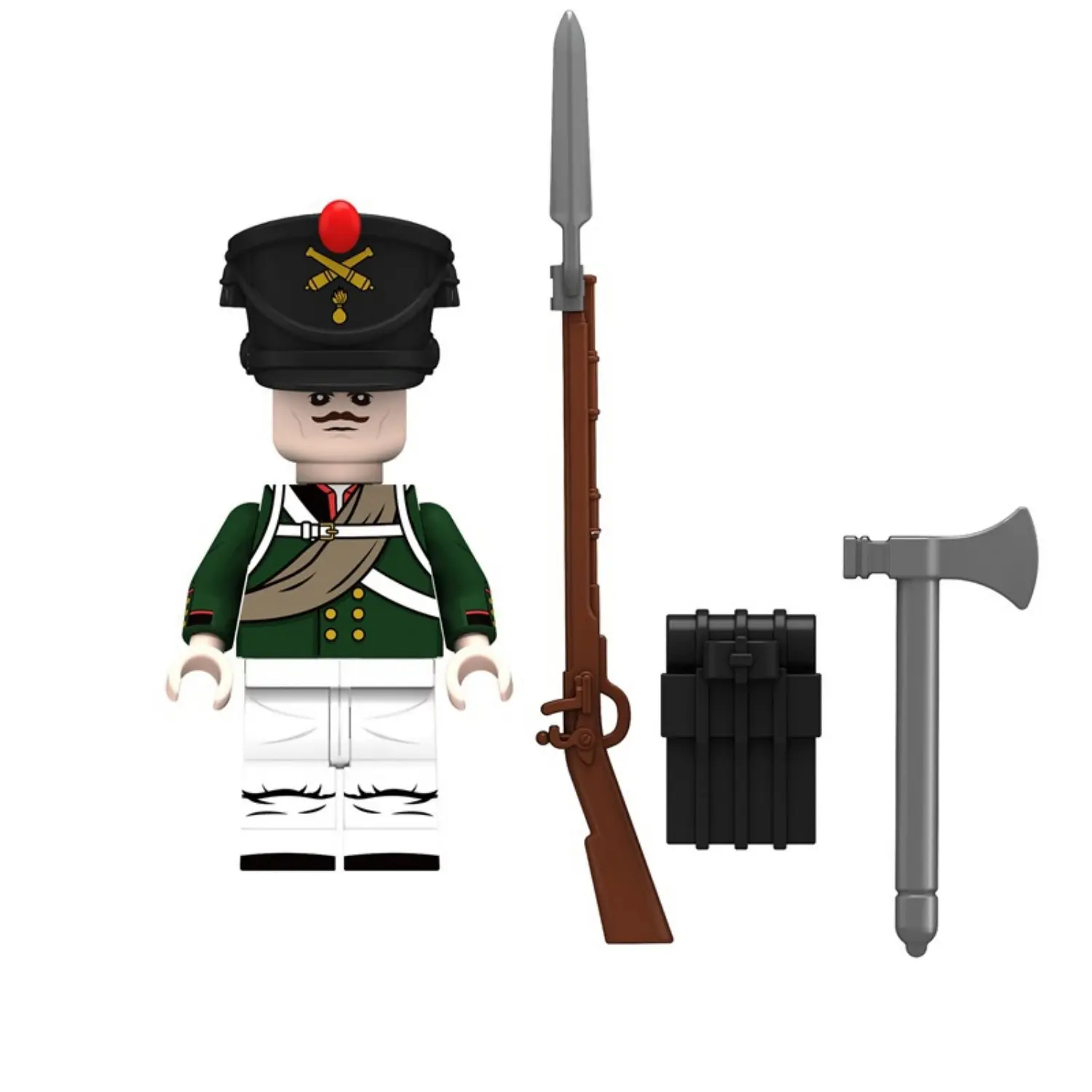This image displays a toy minifigure representing a Russian Foot Artilleryman (Gunner) from the Napoleonic Wars era.
Here is a detailed breakdown of the figure and its historical significance:
The Figure: Russian Foot Artillery Soldier This figure represents the specialized troops responsible for operating the massive cannons of the Imperial Russian Army.
-
Headgear: He wears the distinctive Russian Shako (Kiwer) with a “dipped” top, similar to the infantry. However, the crucial identifier is the Gold Insignia on the front: Two Crossed Cannons. This symbol universally identifies him as a member of the Artillery branch. He also sports a red pom-pom.
-
Uniform: He wears the standard “Tsar Green” tunic with black facings (collars/cuffs) which were typical for artillery units (infantry usually had red).
-
Equipment (The Blanket Roll): Like the infantry, he wears a Grey Greatcoat Roll (Shinel) draped diagonally across his chest. This was standard campaign gear for Russian soldiers to use as bedding or protection against the cold.
-
Weapons & Tools:
-
Musket: Unlike British artillerymen who often went unarmed or just carried swords, Russian foot artillery crews were issued Muskets to defend their guns against enemy cavalry charges.
-
Hand Axe: The grey accessory on the right is a large Axe. This is a historically accurate tool for artillerymen, used for clearing lines of fire, chopping wood for camp, or frantically repairing broken wooden gun carriage wheels during battle.
-
-
Accessories: A black knapsack is included for the back.
Historical Background: The Russian Artillery was considered one of the best in Europe during the Napoleonic Wars. They possessed more guns and heavier calibers than the French. Russian gunners were famous for their suicidal bravery; unlike other armies where gunners would retreat if the enemy got too close, Russian crews would often stand by their cannons to the very last man, firing canister shot until they were overrun. At the Battle of Borodino, the Russian artillery caused horrific casualties to Napoleon’s army, earning them a fearsome reputation.



Reviews
There are no reviews yet.